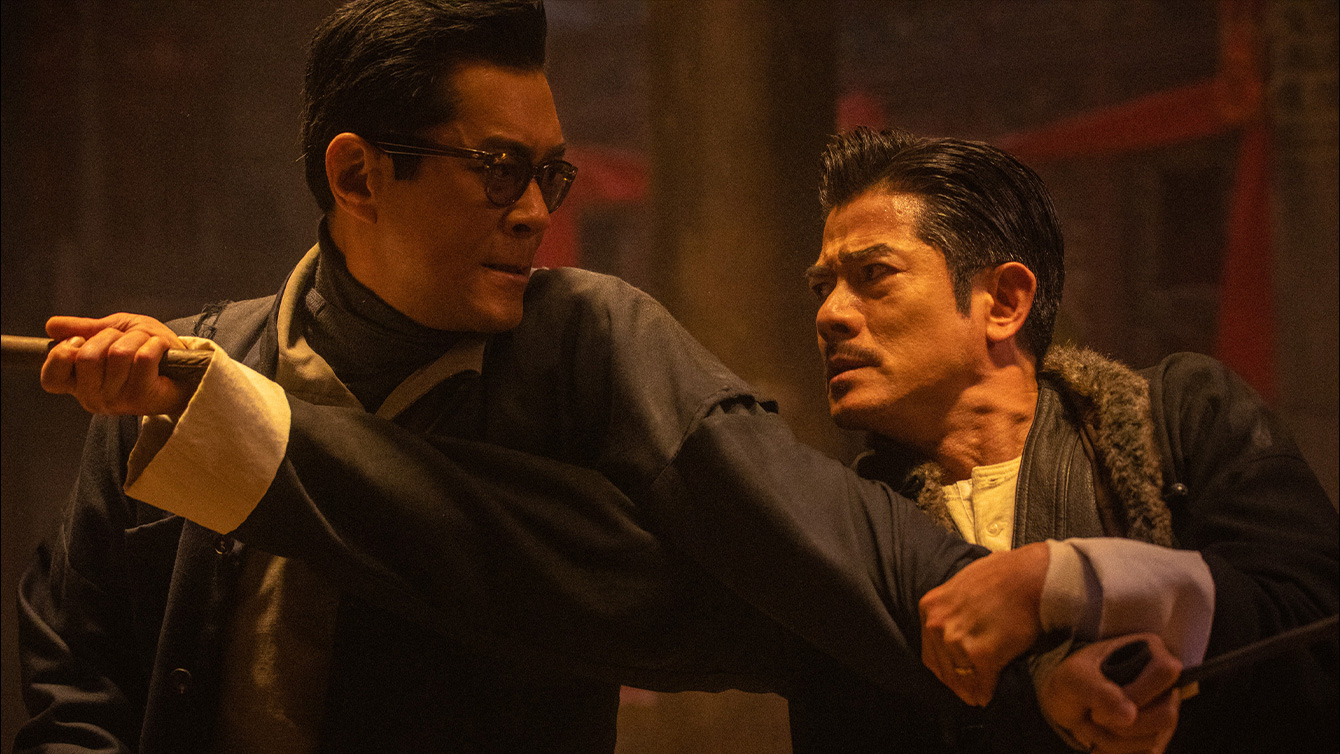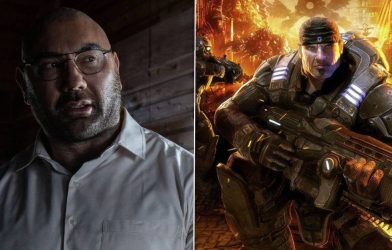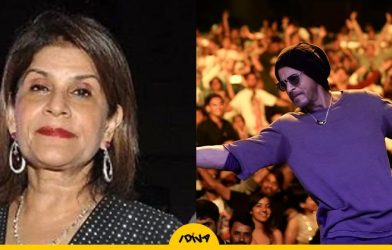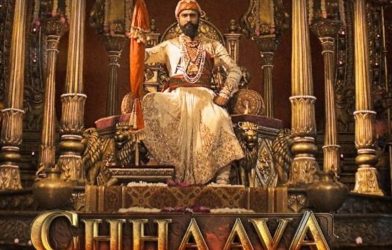Since its local release in May, Soi Cheang’s action sensation Twilight of the Warriors: Walled In has become Hong Kong’s second-biggest domestic hit ever, earning $13.7 million in a city of just 7.2 million residents. But not only has the film reinvigorated Hong Kong’s fabled martial arts genre; it also has revived — if only fleetingly — one of the world’s most alluring architectural monstrosities: the Kowloon Walled City.
Once the most densely populated place on earth, the Kowloon Walled City was an effectively lawless enclave of Hong Kong that grew from the footprint of a small Chinese military fort into a labyrinthine urban microcosm. With no formal infrastructure, its towering, interconnected buildings were constructed haphazardly, creating a dark maze of narrow alleys and secret passages. Before its demolition in 1993, the Walled City had over 35,000 people living in an area of less than seven acres (which amounts to more than 44 times the urban density of Manhattan).
Twilight of the Warriors: Walled In takes place inside the Kowloon Walled City during the pivotal year of 1984 when Britain formally agreed to return the colony of Hong Kong to China. Packed with local action heroes of past and present — Louis Koo, Sammo Hung, Aaron Kwok, Richie Jen, Raymond Lam, Terrance Lau, Kenny Wong, Philip Ng and others — the film tells the story of a young refugee (Lam) who’s forced to seek haven in the Walled City to avoid being extorted by a local crime boss. Inside, he begins to find his place among the enclave’s loose community of well-meaning degenerates. But the protagonist’s presence — and the secrets of his past — will soon unsettle a delicate truce between the gangs inside and outside the Walled City, setting up a street battle for the ages.
Produced by Hong Kong studio Media Asia, Twilight of the Warriors: Walled In earned $95 million in mainland China in May. The film also proved an audience favorite at Cannes, where it screened in the prestigious festival’s midnight section for genre movie gems. Shortly after the Cannes bow, Media Asia simultaneously greenlit a prequel and a sequel, with Cheang and much of the cast returning.
Twilight of the Warriors: Walled In opened in North American cinemas on Friday via specialty distributor Well Go U.S.A. The Hollywood Reporter connected with Cheang over Zoom to discuss the movie’s creation and his vision for the new franchise’s coming two installments.
In global popular culture, the real-life former Walled City has acquired a mystique as an architectural marvel and a transgressive place. But how is it remembered at home, in the popular imagination of Hong Kong?
Before the film was released, the Walled City didn’t hold much significance in the popular imagination of Hong Kong, especially since it had been demolished for over 20 or 30 years. Those who lived there are now quite old, and most people’s understanding of the space came from how it was portrayed in films, often in a negative light. However, as you say, in Western media, the Walled City was sometimes depicted as a cool, almost mythical place, as seen in films like Ghost in the Shell and Blade Runner.
Since the film’s release, though, there’s been a shift. Younger generations are now engaging in conversations with their elders about what life was really like in the Walled City, sparking a renewed sense of curiosity and interest in its history.
The Kowloon Walled City was demolished in 1993. You were born in Macau in 1972 and spent all of your teenage years in Hong Kong. Do you have any personal memories of the place?
When I first moved to Hong Kong from Macau at the age of 11, my school was actually near the Walled City. It was always known as a scary, somewhat dirty place, and people generally avoided it. The closest I ever came to entering was when my sister almost went to a dentist there, but in the end, my family decided against it because we were too uneasy about stepping into that space.

The real-life Kowloon Walled City in 1989.
Ian Lambot
Setting aside the architecture for now, how did you go about recreating the unique culture that existed within the Walled City?
I spoke with many former residents, including members of the triads, and what I quickly realized was that the portrayal of the Walled City in the local media was far from accurate. While it’s true that the area was drug-ridden and controlled by triads during the ’80s, I discovered that it also served as a sanctuary for those who were marginalized — illegal immigrants or anyone who simply needed a place to exist. This space, though harsh, offered safety and community to those who couldn’t find it elsewhere in Hong Kong, reflecting an old side of the city that fascinated me.
Through interviews, I learned about the unique relationships between the residents and the triads. For instance, the actor, Gordon Lam, who grew up there, told me a story about how he and his sister once needed to move a sofa, but they couldn’t do it because they were just kids. So, his sister asked some guys nearby for help. It turns out they were triad members, but they pitched in and helped move it — and then went straight back to selling drugs. So, there was a very communal relationship between everyone in the Walled City. There was also the tale of a triad member who became a devout Christian, influenced by a very famous nun who lived there and dedicated her life to spending time with these men and trying to convert them. She’s still alive. I spoke with her about her experiences and later showed her the finished film. She said she really liked it. I was hoping to make her a character in the film, but we ran out of time. Hopefully, I can put her in the sequel.
So, most of the people I spoke to had mixed feelings about the Walled City. Everyone acknowledged that such a slum should never exist in a rich city, but they would insist that the relationships between people were very special. I would never want my own children to live in such a harsh place, but I recognized how it offered a refuge for those in need — people who needed a place to go before they could reintegrate into society. This duality was a big inspiration for me.

Director Soi Cheang on set during the making of ‘Twilight of the Warriors: Walled In’
Courtesy of Well Go USA
In the book the film is based on, the protagonist is a triad member who’s from Hong Kong. In the adaptation, you made the character a refugee. Why was that change important to you?
I wanted an entry point for the audience to understand this place. By making the character a refugee, he could be the audience’s eyes and ears, allowing them to experience the Walled City and understand what Hong Kong was like during that time. Hong Kong was a major refugee port then, with interesting people arriving from all over the world, so this change added to the complexity and richness of the setting. Many refugees ended up becoming triad members almost by chance, just because of the circumstances they found themselves in. This shift also allowed me to explore themes of Hong Kong identity and belonging.
Yeah, the film is set during a pivotal transition period in Hong Kong’s history, just as the British committed to handing Hong Kong back to mainland China (the 1984 Sino-British Joint Declaration) — a time that also coincides with the decision to tear down the Kowloon Walled City. Given this backdrop, and the way the film explores the unique nature of Hong Kong identity through its characters, did working on this project evolve your own thoughts on Hong Kong identity in any way?
Yes, during that era, particularly around the handover period, there was certainly an identity crisis. After a century of British rule, people in Hong Kong generally identified as Chinese, but as the handover approached, many began to question what it truly meant to be Chinese. This led to a deep sense of uncertainty about identity.
While making this film, I found myself reflecting on my own relationship with Hong Kong and the evolving meaning of being Chinese in a post-colonial context. Through this process, I’ve come to reaffirm my identity as Chinese, but it’s also about redefining what that means in today’s world. But growing up in Hong Kong has shaped me and making this film has given me a renewed sense of pride in being a Hong Konger.
The film was enormously successful in Hong Kong and quite successful in mainland China as well. Of course, foremost, it’s simply a well-made, extremely entertaining movie. But as an outsider, it feels natural to speculate that part of the film’s success came from tapping into nostalgia for the old Hong Kong, as well as a longing for the golden age of Hong Kong cinema. Do you think that’s true?
In Hong Kong, I do believe the film’s success is partly due to its connection with the city’s history and a strong sense of nostalgia. When I was making the film, this wasn’t something I anticipated or consciously aimed for, so it was quite a surprise to discover how deeply it resonated with audiences in that way.
As for its success in mainland China, it’s a bit different. Since there isn’t the same personal connection to the Walled City, the appeal seems to come from the film’s ’80s action-movie essence, which has struck a chord with audiences there. People in China grew up watching those films, so it’s the Hong Kong movies they have nostalgia for. It’s fascinating to see how the film has been embraced for different reasons in these two regions, and as the director, it’s been a surprise.

Sammo Hung in ‘Twilight of the Warriors: Walled In’
Courtesy of Well Go USA
The film features old-school legends of Hong Kong martial arts cinema, like Sammo Hung, as well as the new generation of action movie talent. What are your hopes for the future of the Hong Kong martial arts action genre?
Hong Kong action is such an integral part of the city’s film culture, so I hope to see a new generation of filmmakers take it forward in innovative ways. Rather than simply relying on nostalgia, it’s important for these new voices to bring fresh perspectives and reinterpret the genre for a new era. Unlike the older generation, who grew up working on sets and learning the craft through hands-on experience as apprentices and assistant directors, the current generation of filmmakers often comes from film schools. This shift in background brings a different approach, which can be both exciting and challenging. Another reality is that action films are expensive to produce, and with the tighter budgets of local cinema today, it can be difficult to achieve the same scale as before. But as opportunities present, I’m personally eager to continue contributing to the evolution of the iconic genre of Hong Kong action films.
It’s been reported that you’re simultaneously developing a sequel and a prequel to Twilight of the Warriors: Walled In. What can you tell us about the vision, and why you wanted to move into both the future and the past with this story?
Yes, the sequel is in development, and we’re also working on a prequel. The plan is to shoot both simultaneously, which will allow us to maintain continuity, especially given the large ensemble cast. Bringing everyone together at the same time will create a cohesive storytelling experience across both films.
While making Twilight of the Warriors: Walled In and working with two generations of actors, I became fascinated by the idea of exploring the older generation’s story during the 1950s. That period was a time of significant migration, with people from different countries coming to Hong Kong, bringing diverse cultures with them. This influx played a crucial role in the formation of the Walled City, and I’m interested in exploring why this unique space was built in the first place and how it became what it was.
For the sequel, I’m keen to delve into the lives of the four young characters we introduced and explore what happens to them after the Walled City comes down. How do they rediscover their humanity and find their place in the world? I’m excited to see where their journeys lead.









